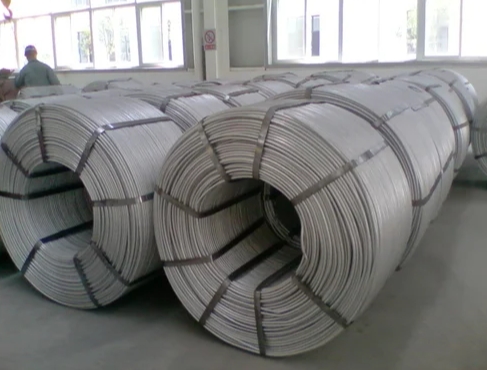
It is widely used by the steel sector for different purposes like deoxidation. Desulfurization. and inclusion removal. This product consists of a core of calcium metal wrapped around a steel cold rolled sheath. This is an effective, cost-efficient method of adding additives to molten iron. It is used in ladle metallurgy to improve steel's quality and increase its machinability.
In order to achieve optimal metallurgical effect the cored wire must be consumed in the steel melt to the greatest extent possible. The process can be complicated due to different melting temperatures between the calcium metal and solid steel. Hi-Cal cored wire has been created to increase the efficiency of the process. This cored-wire combines both the benefits and advantages of conventional wires, with a significantly better metallurgical result and a lower injection rate compared to CaSi or CaFe wires.

Hi-Cal has been developed using an innovative process. Its unique sheath-to-core ratio allows the Hi-Cal to be fed with current equipment found in steelworks. The investment cost and raw material consumption are reduced significantly.
Sheath and core are welded together, creating a core that is highly resistant to corrosion. The sheath is also hermetically sealed to prevent the molten steel from infiltrating into it. The core is protected from oxidation, ensuring its efficiency in metallurgical processes.
Hi-Cal has been optimized by a newly developed technique. In order to increase the amount of calcium that is absorbed into the steel, the cored core wire can be inserted deeper in the slag. This also allows the sheath to be cooled down faster, thereby decreasing the formation of slag foam.
In addition, the Hi-Cal can be used for a wide range of applications in the steelmaking process. You can use it to reduce oxidation in steel and eliminate inclusions. The inclusions in steel can impact the mechanical qualities of the finished product. The pure calcium cored wire helps to eliminate these impurities by converting them into insoluble compounds such as Calcium oxide and sulphide, which can be separated from the molten steel and recycled. Hi-Cal increases the steel’s machinability, while reducing its carbon. For low-carbon alloys, Hi-Cal may even increase their strength. Hi-Cal is also able to help reduce energy usage in the process of steelmaking. The result is that energy costs can be reduced by as much as 30%. This will allow the steelmakers to use their money for other worthwhile projects such as automating or introducing new technology into the process of steelmaking.

Write a Message